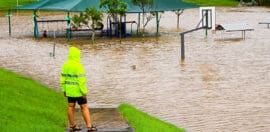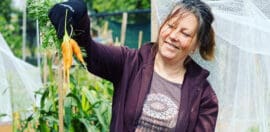Conservation plan launches to regenerate Australia

21 October 2020 at 1:37 pm
The plan is initially aiming to double the number of koalas on the east coast by 2050
Drones will be used by conservationists to regenerate koala habitat destroyed by the catastrophic summer bushfires in NSW, as part of a new ambitious project aiming to “future-proof” Australia from climate disasters.
Launched on Monday by the World Wildlife Fund, the Regenerate Australia plan is the largest wildlife and nature regeneration program in the nation’s history.
The organisation aims to raise $300 million over the next five years to fund Regenerate Australia, but Dermot O’Gorman, WWF CEO, said that the unprecedented damage caused by the bushfires called for an unprecedented response.
“The 2019-20 bushfires were one of the greatest natural disasters in our country’s history and a window into the future of climate change,” he said.
“Regenerate Australia will be the largest and most innovative wildlife recovery and landscape regeneration program in Australia’s history.”
There are a number of projects in the works, but it is initially aiming to double the number of koalas on the east coast by 2050.
O’Gorman said the organisation was excited to trial specialised drones, with some models capable of dispersing up to 40,000 seeds of koala food trees a day.
He said the efforts to double koala numbers by 2050 would also benefit many other species as well as boost the local economy of regional communities.
“This will create corridors so that koalas and other wildlife can move across a landscape fragmented by fire and land clearing,” O’Gorman said.
Sites being considered for drone seed dispersal include Richmond Valley, Northern NSW, South East Qld, the Australian Alps, NSW South Coast, and East Gippsland.
Bushfire-affected communities and Indigenous communities were consulted prior to launching the project.
Collaboration is key
WWF also announced two challenges which it said would crowdsource bold climate solutions from the public.
The first challenge seeks solutions to help restore species and their landscapes, build their resilience, and adapt to a changing climate, and the second, to be held in 2021, will support front-line communities to bring future-proofing solutions to life.
O’Gorman said that collaborating with a wide range of partners to share and come up with ideas would be critical to the project’s success.
“We need to work with local communities, governments, Traditional Owners, NGOs, scientists, businesses, innovators, investors, foundations, as well as individuals,” he said.
“WWF is already working at a local, regional, and national level on our partners’ restoration and resilience initiatives. That has given us the confidence that by collaborating extensively, a much stronger collective impact can be delivered for all Australians.”
More information on the project can be found here.







